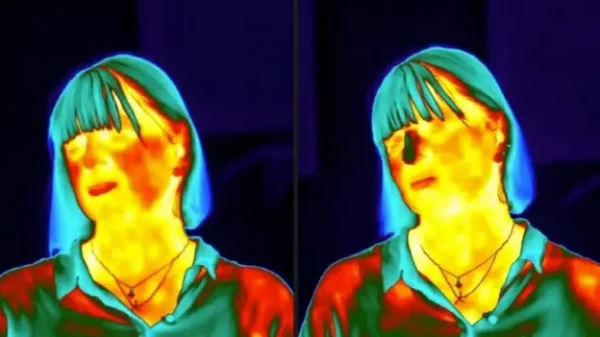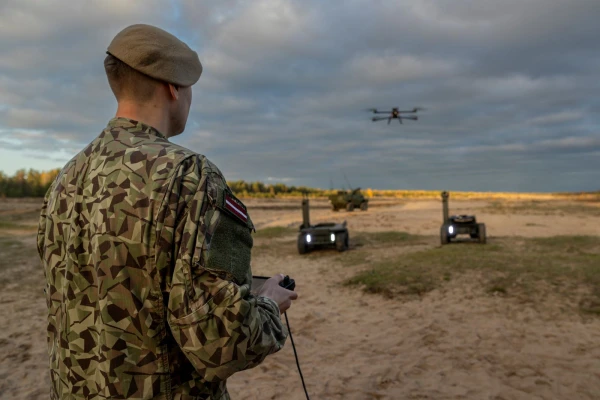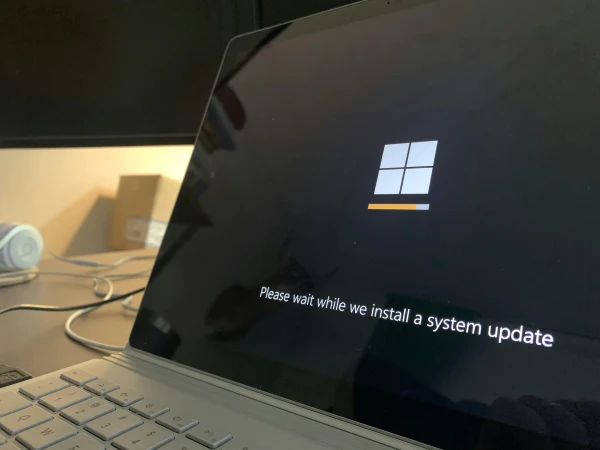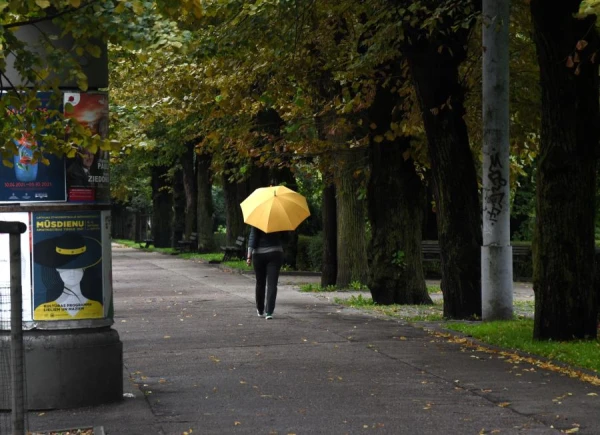
I had to give an improvised five-minute speech and then count backwards with an interval of 17 between the numbers — all in front of a committee of three strangers. At that moment, it was easy to see from my face that I was experiencing acute stress.
I had to give an improvised five-minute speech and then count backwards with an interval of 17 between the numbers — all in front of a committee of three strangers. At that moment, it was easy to see from my face that I was experiencing acute stress, wrote a BBC journalist.
This rather frightening experiment was filmed by psychologists from the University of Sussex. As part of their research project, they are studying the effects of stress on people — and using thermal cameras in the process.
Stress alters blood flow in the face, and scientists have found that changes in the temperature of a person's nose can be used to measure both stress levels and recovery rates.
According to the psychologists conducting the research, thermal imaging could be a breakthrough in the study of stress.
The experimental stress test I was invited to was carefully controlled and specifically designed to be an unpleasant surprise for the individual. I arrived at the university with no idea of what awaited me.
First, I was asked to sit down, relax, and listen to white noise through headphones.
So far, everything was calm.
Then the researcher conducting the test invited a group of three strangers into the room. I was informed that I had three minutes to prepare a five-minute speech about my "dream job." The three strangers kept their eyes on me the whole time.
I felt blood rush to my neck — and the scientists captured the change in the color of my face using a thermal camera.
As I pondered how to handle this unplanned presentation (deciding to say that I would like to join the astronaut training program), the temperature of my nose quickly dropped — on the thermal image, it turned blue.
What is the benefit?
Researchers from the University of Sussex conducted the same stress test on 29 volunteers. Each of them experienced a drop in nose temperature of three to six degrees.
My nose cooled by two degrees as my nervous system redirected blood from my nose to my eyes and ears — a physical reaction that helps one watch and listen carefully to detect danger.
Most participants, like me, quickly returned to normal; their noses warmed back to pre-stress levels within a few minutes.
Lead researcher Professor Gillian Forrester explained that working as a reporter and presenter likely made me "sufficiently accustomed to stressful situations."
"You are used to the camera and talking to strangers, so you are probably quite resilient to social stressors," she explained. "But even someone like you, trained to be in stressful situations, shows a biological change in blood flow, suggesting that this 'decrease in nasal temperature' can be considered a reliable indicator of changes in stress state."
Caption: When we experience acute stress, the temperature of the nose drops within minutes. Stress is a part of our lives. But, according to scientists, their discovery could be used to manage stress.
"The time it takes for a person to recover after a drop in temperature could be an objective measure of how well they regulate their stress," said Professor Forrester. "If a person recovers unusually slowly, could this be a marker of anxiety or depression risk? Is there something that can be done about it?"
Since this method is non-invasive and measures physical responses, it can also be used to monitor stress in infants or individuals who cannot communicate in the usual way.
The second task in my stress test, in my opinion, was even worse than the first. I was asked to count backwards from 2023 with an interval of 17. Someone from the trio of impassive strangers stopped me every time I made a mistake and asked me to start over.
I admit, I am not good at mental arithmetic.
As I struggled with uncomfortably long pauses to make my brain remember the art of mental counting, the only thought that crossed my mind was how to escape this stuffy room.
During the study, only one of the 29 volunteers who participated in the stress test actually asked to leave. The others, like me, completed their tasks (likely experiencing varying degrees of discomfort) and ultimately received their reward — another dose of white noise in their headphones.
Anxious Primates
Professor Forrester is set to present this new method of measuring stress to an audience at the New Scientist Live event in London on October 18.
Perhaps one of the most surprising aspects of this approach is that it can also be used for primates that do not belong to the genus Homo. This is because thermal cameras measure the physical response to stress, which is innate in many primates.
Infrared image of a chimpanzee behind bars Caption: Chimpanzees and gorillas in sanctuaries may have ended up there from unfavorable conditions. Currently, researchers are developing the potential for its use in sanctuaries for great apes, including chimpanzees and gorillas. They want to find out how to reduce stress and improve the well-being of animals that have ended up there from unfavorable environments.
Scientists have already found that showing adult chimpanzees video recordings of baby chimpanzees has a calming effect. When researchers set up a video screen next to the enclosure of rescued chimpanzees, they observed that the noses of the animals watching the video became warmer.
Using thermal cameras in primate sanctuaries could prove useful in helping animals adapt and acclimate to new social groups and unfamiliar surroundings.
"They cannot tell us how they feel and can mask their feelings quite well," explained Marianna Paisley, a researcher from the University of Sussex studying the welfare of great apes. "We have studied primates for the last 100 years to better understand ourselves. Now that we know so much about human mental health, perhaps we can use this knowledge to give back to them."
So perhaps my stress test will make its modest contribution to alleviating the suffering of some of our primate relatives.














Leave a comment